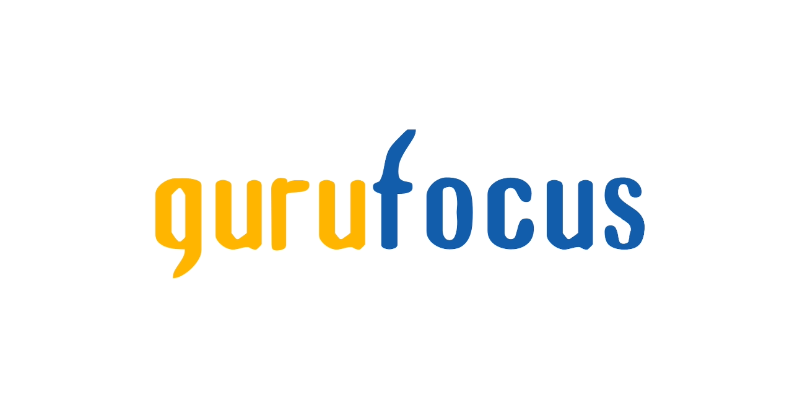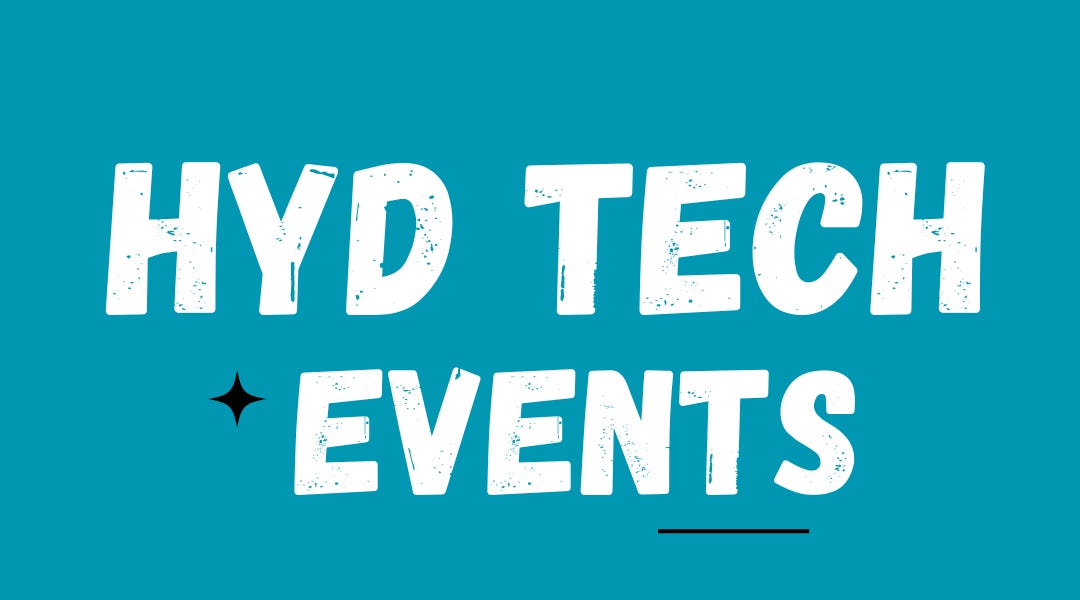Month: February 2025
Microsoft Launches Visual Studio 2022 v17.13 with AI-Powered Enhancements and Improved Debugging

MMS • Robert Krzaczynski

Microsoft has released Visual Studio 2022 v17.13, introducing significant improvements in AI-assisted development, debugging, productivity, and cloud integration. This update focuses on refining workflows, enhancing code management, and improving the overall developer experience.
One of the features in this release is GitHub Copilot Free, which provides 2,000 code completions and 50 chat requests per month at no cost. Copilot has also been improved with AI-powered feature search, enhanced multi-file editing, and shortcut expansions, making it easier to navigate and optimize code. These AI-powered improvements are already receiving positive feedback from developers. Hugo Augusto, an IT consultant, commented:
Adding AI directly inside VS is the biggest addition Microsoft has made in a while. I’m surprised every day at how good the suggestions are and how it understands the context of the source to provide those suggestions.
Another user shared their experience with GitHub Copilot Free, emphasizing how much it has improved their workflow:
I have been playing around with GitHub Copilot Free, and I have to say, it’s been a game-changer for my workflow. The advanced debugging features in Visual Studio 2022 v17.13 are also nice.
Alongside AI improvements, Visual Studio 2022 v17.13 introduces new productivity features. Developers can now set default file encoding, use a more accessible horizontal scrollbar, and quickly navigate recent files in Code Search. There is also an option to indent wrapped lines for better readability.
Debugging and diagnostics have also seen major enhancements. AI-generated thread summaries in Parallel Stacks simplify debugging complex applications, while the profiler now unifies async stacks for .NET profiling and introduces color-coded CPU swim lanes for easier performance analysis. IEnumerable Visualizer has been updated with syntax highlighting and Copilot-powered inline chat, making LINQ query debugging more efficient.
For Git users, this version allows developers to add comments directly on pull requests from within Visual Studio. Additionally, AI-powered commit suggestions help catch potential issues early, ensuring higher code quality before merging.
Furthermore, web and cloud developers can now integrate .NET Aspire with Azure Functions for easier serverless application development. Docker Compose introduces scaling support, offering more control over containerized environments. In addition, front-end developers can extract HTML into Razor components, improving code structure and maintainability.
Moreover, Database developers using SQL projects can now take advantage of SDK-style project support in SSDT, improving debugging and schema comparison. Visual Studio also preserves font preferences across themes, ensuring a consistent interface.
More information about the features can be found in the release notes.

MMS • RSS

Summary
MongoDB Inc (MDB, Financial), a leading developer data platform company, announced on February 27, 2025, that its CEO, Dev Ittycheria, and Interim CFO, Serge Tanjga, will present at the Morgan Stanley Technology, Media & Telecom Conference in San Francisco, CA. The presentation is scheduled for March 6, 2025, at 11:30 a.m. Pacific Time. A live webcast will be available on MongoDB’s investor relations website, with a replay accessible for a limited time.
Positive Aspects
- MongoDB’s participation in a prestigious conference highlights its industry relevance and leadership.
- The live webcast and replay availability provide accessibility to a broader audience, enhancing investor engagement.
- MongoDB’s mission to empower innovators aligns with current market trends towards digital transformation.
Negative Aspects
- The press release does not provide specific details on the topics to be covered in the presentation.
- There is no mention of new product launches or strategic partnerships, which could have added more excitement.
Financial Analyst Perspective
From a financial analyst’s viewpoint, MongoDB’s participation in the Morgan Stanley conference is a strategic move to showcase its growth potential and innovation capabilities to investors and industry peers. The company’s focus on empowering developers and its extensive customer base in over 100 countries are strong indicators of its market position. However, the lack of detailed financial updates or new strategic initiatives in the press release may leave some investors seeking more concrete information on future growth prospects.
Market Research Analyst Perspective
As a market research analyst, MongoDB’s engagement in the conference underscores its commitment to maintaining a strong presence in the technology sector. The company’s emphasis on a unified developer data platform positions it well in the competitive landscape of modern application development. The absence of specific presentation topics, however, suggests that MongoDB may be focusing on reinforcing its existing strategies rather than introducing groundbreaking changes at this event.
FAQ
Q: When and where is MongoDB presenting?
A: MongoDB is presenting at the Morgan Stanley Technology, Media & Telecom Conference in San Francisco, CA, on March 6, 2025, at 11:30 a.m. Pacific Time.
Q: Who will be presenting from MongoDB?
A: CEO Dev Ittycheria and Interim CFO Serge Tanjga will be presenting.
Q: How can I access the presentation?
A: A live webcast will be available on MongoDB’s investor relations website, with a replay accessible for a limited time.
Q: What is MongoDB’s mission?
A: MongoDB’s mission is to empower innovators to create, transform, and disrupt industries by unleashing the power of software and data.
Read the original press release here.
This article, generated by GuruFocus, is designed to provide general insights and is not tailored financial advice. Our commentary is rooted in historical data and analyst projections, utilizing an impartial methodology, and is not intended to serve as specific investment guidance. It does not formulate a recommendation to purchase or divest any stock and does not consider individual investment objectives or financial circumstances. Our objective is to deliver long-term, fundamental data-driven analysis. Be aware that our analysis might not incorporate the most recent, price-sensitive company announcements or qualitative information. GuruFocus holds no position in the stocks mentioned herein.

MMS • RSS
<!–
–>
By Gloria Methri
Today
- Banking Modernisation
- Banking Transformation
- Europe
 Lombard Odier, a global Swiss private bank, has partnered with MongoDB to modernise its banking technology systems further. As part of the collaboration, MongoDB has accelerated the modernisation of Lombard Odier’s systems and applications with generative AI, reducing technical complexity and accelerating the bank’s innovation journey.
Lombard Odier, a global Swiss private bank, has partnered with MongoDB to modernise its banking technology systems further. As part of the collaboration, MongoDB has accelerated the modernisation of Lombard Odier’s systems and applications with generative AI, reducing technical complexity and accelerating the bank’s innovation journey.
The generative AI-assisted modernisation initiative has enabled Lombard Odier to:
- Migrate code 50 to 60 times quicker than previous migrations
- Move applications from legacy relational databases to MongoDB twenty times faster, leveraging generative AI
- Automate repetitive tasks with AI tooling to accelerate the pace of innovation, reducing project times from days to hours.
Delivering seamless digital experiences to private and institutional customers while driving cost efficiencies is a major challenge across the banking industry. With digitisation accelerating and AI afoot, Lombard Odier is evolving its systems and integrating new technologies to give its clients better service and experience.
The bank’s GX Program—a seven-year initiative designed to modernise Lombard Odier’s banking application architecture to respond to market developments—launched in 2020 with the goal of enabling quicker innovation, reducing potential service disruption, and improving customer experiences.
Building on its 10-year relationship with MongoDB, Lombard Odier chose MongoDB as the data platform for its transformation initiative. The bank initially decided to develop its portfolio management system (PMS) on MongoDB. The bank’s largest application, with thousands of users, PMS manages shares, bonds, exchange-traded funds, and other financial instruments. MongoDB’s ability to scale was key to this system migration, as this system is used to monitor investments, make investment decisions, and generate portfolio statements. It is also the engine that runs Lombard Odier’s online banking application “MyLO,” which is used by the bank’s customers.
The bank engaged with MongoDB to co-build a Modernisation Factory—a service that helps customers eliminate barriers like time, cost, and risk frequently associated with legacy applications and eliminate technical debt that has accumulated over time—to expedite a secure and efficient modernisation. MongoDB’s Modernisation Factory team worked with Lombard Odier to create customisable generative AI tooling, including scripts and prompts tailored for the bank’s unique tech stack. This accelerated the modernisation process by automating integration testing and code generation for seamless deployment.
“To enhance Lombard Odier’s business strategy, we developed a technology platform that draws on the latest technological innovations to facilitate employees’ day-to-day work, and provide clients with individualised investment perspectives,” said Geoffroy De Ridder, Head of Technology and Operations at Lombard Odier. “We chose MongoDB because it offers us a cloud-agnostic database platform and an AI modernisation approach, which helps to automate time-consuming tasks, accelerate the upgrade of existing applications, and migrate them at a faster rate than ever before. Having up to date technology has made a big impact on our employees and customers while proving to be fast, cost-effective, and reducing maintenance overheads.”

MMS • RSS

-
Optimizing Business Decisions with AI: Evolutionary Algorithms in Actions
Date: Saturday, March 1,11:00 AM to 1:00 PM
Place: CIE at IIIT Hyderabad
-
Global AI Bootcamp 2025 Hyderabad – 1 March 2025
Date: Saturday, March 1, 9:00 AM to 2:00 PM
Place: Building 3, Microsoft office, Microsoft Campus, ISB Rd, Gachibowli
-
DSA Roadmap: for Software Engineering in 2024
Date: Saturday, March 1,11:00 AM to 5:30 PM
Place: CIE at IIIT Hyderabad
-
Grafana & Friends Hyderabad X CloudBuilders March Meetup
Date: Saturday, March 8, 10:00 AM to 1:00 PM IST
Place: CloudBuilders, Hyderabad
-
Date: Saturday, March 8, 9:00 AM to 2:00 PM
Place: Building 3, Microsoft office, Microsoft Campus, ISB Rd, Gachibowli
Future Events/Conferences:
-
Grafana & Friends Hyderabad X Cloud Builders March Meetup
Date: Saturday, March 8, 10:00 AM to 1:00 PM
Place: Cloud Builders, IndiQube Peral 1st Floor, Beside Rolling Hills and Ramky Towers, Mindspace Rd, P Janardhan Reddy Nagar
-
MongoDB x TensorFlow: Supercharging AI with MongoDB: RAG, Search & Security
Date: Saturday, March 8, 10:00 AM to 02:30 PM
Place: EPAM-SALARPURIA SATTVA KNOWLEDGE CITY, Hyderabad
-
Date: Saturday, March 15, 9:30 AM to 4:00 PM
Place: CIE at IIIT Hyderabad
Experience Hyderabad’s vibrant tech community in person. See you there! Follow me on bluesky @ksridhar02

MMS • RSS

NEW YORK, Feb. 27, 2025 /PRNewswire/ — MongoDB, Inc. (NASDAQ: MDB) today announced that Chief Executive Officer, Dev Ittycheria, and Interim Chief Financial Officer, Serge Tanjga, will present at the Morgan Stanley Technology, Media & Telecom Conference in San Francisco, CA.

MMS • RSS
NEW YORK, Feb. 27, 2025 /PRNewswire/ — MongoDB, Inc. (NASDAQ: MDB) today announced that Chief Executive Officer, Dev Ittycheria, and Interim Chief Financial Officer, Serge Tanjga, will present at the Morgan Stanley Technology, Media & Telecom Conference in San Francisco, CA.
The MongoDB presentation is scheduled for Thursday, March 6, 2025, at 11:30 a.m. Pacific Time (2:30 p.m. Eastern Time). A live webcast of the presentation will be available on the Events page of the MongoDB investor relations website at https://investors.mongodb.com/news-events/events. A replay of the webcast will also be available for a limited time.
About MongoDB
Headquartered in New York, MongoDB’s mission is to empower innovators to create, transform, and disrupt industries by unleashing the power of software and data. Built by developers, for developers, MongoDB’s developer data platform is a database with an integrated set of related services that allow development teams to address the growing requirements for today’s wide variety of modern applications, all in a unified and consistent user experience. MongoDB has tens of thousands of customers in over 100 countries. The MongoDB database platform has been downloaded hundreds of millions of times since 2007, and there have been millions of builders trained through MongoDB University courses. To learn more, visit mongodb.com.
Investor Relations
Brian Denyeau
ICR for MongoDB
646-277-1251
ir@mongodb.com
Media Relations
MongoDB PR
press@mongodb.com
![]() View original content to download multimedia:https://www.prnewswire.com/news-releases/mongodb-inc-to-present-at-the-morgan-stanley-technology-media–telecom-conference-302387900.html
View original content to download multimedia:https://www.prnewswire.com/news-releases/mongodb-inc-to-present-at-the-morgan-stanley-technology-media–telecom-conference-302387900.html
SOURCE MongoDB, Inc.

MMS • RSS

IBM recently announced plans to acquire DataStax, a leading provider of NoSQL database solutions and AI tools. This strategic acquisition aims to accelerate production AI and NoSQL data capabilities at scale—developments that carry particular significance for the federal government’s homeland security community.
The homeland security sector relies heavily on robust, secure, and scalable data infrastructure to support critical missions across border security, emergency management, cybersecurity, and intelligence gathering. DataStax’s expertise with Apache Cassandra®, which powers mission-critical applications for major enterprises like FedEx, Capital One, and Verizon, as well as databases for the Department of Veteran Affairs and the Defense Information Systems Agency, offers compelling capabilities for homeland security agencies that similarly require high-availability, fault-tolerant systems that can handle massive data volumes without downtime.
Chet Kapoor, Chairman & CEO at DataStax, stated, “We have long said that there is no AI without data, and this vision will now be amplified with IBM.” The integration of DataStax’s hybrid vector database technology with IBM’s watsonx platform presents significant opportunities for homeland security applications. Retrieval Augmented Generation (RAG) techniques, which allow large language models (LLMs) to access external knowledge bases before generating responses, could dramatically improve intelligence analysis, threat assessment, and situational awareness capabilities within homeland security operations.
Since 2020, IBM and DataStax have collaborated to serve customers including T-Mobile and The Home Depot. DataStax’s recent introduction of a Hyper-Converged Database (HCD) and Mission Control has further advanced Cassandra’s deployment in cloud-native environments, particularly on IBM OpenShift. For homeland security agencies navigating complex cloud migration strategies, this integration could provide secure, containerized database solutions that meet federal compliance requirements while maintaining operational flexibility.
As homeland security agencies continue to implement zero trust architecture in accordance with federal mandates, DataStax’s scale-out capabilities combined with IBM’s enterprise security features could provide a foundation for secure, compartmentalized data access that aligns with zero trust principles while maintaining the performance needed for time-sensitive homeland security applications.
“We are immensely excited about the value that our combined technologies can bring to our clients and the opportunity we have to continue advancing open-source excellence and innovation across critical areas in data and AI,” wrote Ritika Gunnar, General Manager, Data and AI, IBM.
The planned acquisition represents not just a business transaction, but a potential acceleration of AI and data capabilities that could significantly enhance the technological toolkit available to those safeguarding our nation’s security. As the acquisition moves forward, homeland security leaders should closely monitor how these combined technologies might be leveraged to address their most pressing data and AI challenges.
IBM’s acquisition of DataStax is subject to the close of the transaction and regulatory approval.
IBM is a Government Technology and Services Coalition Mentor Partner.

MMS • Ben Linders

Security can be at odds with a fast and efficient development process. At QCon San Francisco Dorota Parad presented how to create a foundation for security without negatively impacting engineering productivity.
Traditionally, security is all about defense, Parad said. We focus on stopping the attackers, so we put obstacles in place to stop them. These very same obstacles often get in the way of our own employees as much, if not more, as the malicious actors, she mentioned.
Considering software development, engineers have the power to bring our whole system down, so it’s not much of a mental jump to treat them as a source of security risk, Parad argued. But it’s the same engineers who make the system run and release the features that keep our business going:
Putting too many obstacles in their way means slowing down our value delivery, which in the long run costs the business more than a security incident would.
Parad mentioned that there is the tension between security and productivity, which traditionally gets resolved by an unsatisfying mixture of security theater and lax security posture, all dressed up as “compliance”. In that situation, no one wins except the attackers, she added.
Parad presented a framework she created, called BLISS, which helps implement security without negatively impacting engineering productivity. BLISS stands for bulkheads, levels, impact, simplicity, and pit of success:
- Bulkheads let you limit the blast radius of security incidents through separation and isolation.
- Instead of applying a single, strict strategy to everything, have different levels of protection proportionate to the level of risk.
- Focus on minimizing the impact of the incidents instead of just limiting the probability.
- Keep your processes and tools simple to make them easier to secure.
- Create a pit of success, where it’s so easy to do the right thing that it happens by default.
This way, you can make your security strategy almost invisible to the engineers while embedding it deep into the culture at the same time, Parad said.
Focusing on minimizing the impact of breaches can be more effective than trying to prevent the breach in the first place, Parad said. What security teams often overlook is that modern software development already includes a lot of ways that make a successful attack less likely compared to the early days of the internet. CI/CD pipelines, ephemeral test environments with automated tests, code reviews, serverless infrastructure are just some of the examples, she explained:
I’m not saying we should completely ignore prevention, things aren’t so black and white. From what I see in the industry though, security teams often overindex on measures intended to prevent breaches, and that’s ineffective.
None of these offer full protection, but when we consider them all together, they create a baseline that’s good enough, Parad said. At that point, trying to reduce the likelihood of a breach tends to bring diminishing returns, so it makes sense to look at the impact side of things.
Assume every part of your system is going to get compromised at some point; it’s not a matter of if, but when, Parad said. She suggested thinking about what you do so that an event doesn’t turn into a total catastrophe.
InfoQ interviewed Dorota Parad about improving security and productivity.
InfoQ: What can be done to improve both engineer productivity and security?
Dorota Parad: An example is logging in with Single Sign On (SSO) instead of having to use multiple usernames and passwords. Not only is that easier for the user – no need to remember or type in that annoying password every time, it’s also more secure.
Any time you make a part of your development process simpler or more robust is going to be a productivity win; we all understand that intuitively. What’s less obvious is that those same optimizations tend to improve security as well. If it’s automated, it’s fewer places for a malicious actor to use social engineering to get access. Fewer steps in a process mean fewer attack vectors. Removing tools from our tool chain means fewer things to break and fewer vulnerabilities to patch.
InfoQ: You highlighted the importance of “bulkheads” to limit the blast radius of incidents—what are some practical ways teams can achieve this?
Parad: It’s all about the separation: separate git repositories with separate access controls, separate deployments, cloud accounts, databases, and so on. I always say security starts with the architecture and how well you can achieve that separation is going to be constrained by your architecture choices.
If you have a monolith where everything has to be deployed all together into a single cloud account, you’re going to be pretty limited on where you can place your bulkheads. But even then, having a separate instance for each customer will offer some way to limit the blast radius in the event that one instance gets compromised.
Ideally, we want a modular architecture with different parts of the system deployed and operated independently. That way, if one part becomes compromised, it doesn’t automatically mean the whole system is.
Los Angeles Capital Management LLC Acquires Shares of 37,641 MongoDB, Inc. (NASDAQ:MDB)

MMS • RSS
Los Angeles Capital Management LLC acquired a new stake in MongoDB, Inc. (NASDAQ:MDB – Free Report) in the fourth quarter, according to the company in its most recent disclosure with the Securities and Exchange Commission (SEC). The fund acquired 37,641 shares of the company’s stock, valued at approximately $8,763,000. Los Angeles Capital Management LLC owned approximately 0.05% of MongoDB as of its most recent filing with the Securities and Exchange Commission (SEC).
A number of other large investors have also modified their holdings of the company. Hilltop National Bank increased its stake in shares of MongoDB by 47.2% in the 4th quarter. Hilltop National Bank now owns 131 shares of the company’s stock valued at $30,000 after purchasing an additional 42 shares in the last quarter. Brooklyn Investment Group purchased a new stake in shares of MongoDB in the third quarter valued at approximately $36,000. Continuum Advisory LLC raised its stake in shares of MongoDB by 621.1% during the 3rd quarter. Continuum Advisory LLC now owns 137 shares of the company’s stock worth $40,000 after buying an additional 118 shares during the period. Versant Capital Management Inc raised its stake in shares of MongoDB by 1,100.0% during the 4th quarter. Versant Capital Management Inc now owns 180 shares of the company’s stock worth $42,000 after buying an additional 165 shares during the period. Finally, Wilmington Savings Fund Society FSB purchased a new position in shares of MongoDB during the 3rd quarter valued at approximately $44,000. Institutional investors and hedge funds own 89.29% of the company’s stock.
Analysts Set New Price Targets
MDB has been the subject of a number of research analyst reports. Piper Sandler restated an “overweight” rating and set a $425.00 price objective on shares of MongoDB in a research report on Tuesday, December 10th. Rosenblatt Securities assumed coverage on shares of MongoDB in a research report on Tuesday, December 17th. They set a “buy” rating and a $350.00 price target for the company. Oppenheimer lifted their price objective on MongoDB from $350.00 to $400.00 and gave the stock an “outperform” rating in a report on Tuesday, December 10th. Macquarie assumed coverage on MongoDB in a research note on Thursday, December 12th. They set a “neutral” rating and a $300.00 price objective for the company. Finally, Canaccord Genuity Group raised their target price on MongoDB from $325.00 to $385.00 and gave the company a “buy” rating in a research report on Wednesday, December 11th. Two research analysts have rated the stock with a sell rating, four have given a hold rating, twenty-three have given a buy rating and two have issued a strong buy rating to the company. Based on data from MarketBeat.com, MongoDB has a consensus rating of “Moderate Buy” and an average price target of $361.00.
Read Our Latest Research Report on MDB
MongoDB Price Performance
Shares of NASDAQ:MDB traded down $5.89 during midday trading on Thursday, reaching $262.41. 1,388,930 shares of the company’s stock were exchanged, compared to its average volume of 1,489,873. The stock has a market cap of $19.54 billion, a price-to-earnings ratio of -95.77 and a beta of 1.28. MongoDB, Inc. has a fifty-two week low of $212.74 and a fifty-two week high of $449.12. The firm’s 50 day simple moving average is $261.95 and its two-hundred day simple moving average is $274.67.
MongoDB (NASDAQ:MDB – Get Free Report) last announced its quarterly earnings results on Monday, December 9th. The company reported $1.16 earnings per share for the quarter, beating analysts’ consensus estimates of $0.68 by $0.48. MongoDB had a negative net margin of 10.46% and a negative return on equity of 12.22%. The business had revenue of $529.40 million during the quarter, compared to analysts’ expectations of $497.39 million. During the same period last year, the business earned $0.96 earnings per share. The business’s revenue for the quarter was up 22.3% on a year-over-year basis. Equities research analysts predict that MongoDB, Inc. will post -1.78 earnings per share for the current fiscal year.
Insider Buying and Selling at MongoDB
In related news, CEO Dev Ittycheria sold 8,335 shares of the company’s stock in a transaction that occurred on Tuesday, January 28th. The shares were sold at an average price of $279.99, for a total transaction of $2,333,716.65. Following the sale, the chief executive officer now directly owns 217,294 shares of the company’s stock, valued at $60,840,147.06. This represents a 3.69 % decrease in their position. The sale was disclosed in a filing with the Securities & Exchange Commission, which is accessible through this hyperlink. Also, Director Dwight A. Merriman sold 3,000 shares of the firm’s stock in a transaction that occurred on Monday, December 2nd. The shares were sold at an average price of $323.00, for a total transaction of $969,000.00. Following the completion of the transaction, the director now directly owns 1,121,006 shares of the company’s stock, valued at $362,084,938. This represents a 0.27 % decrease in their position. The disclosure for this sale can be found here. Insiders have sold a total of 41,979 shares of company stock valued at $11,265,417 over the last quarter. 3.60% of the stock is owned by company insiders.
MongoDB Company Profile
MongoDB, Inc, together with its subsidiaries, provides general purpose database platform worldwide. The company provides MongoDB Atlas, a hosted multi-cloud database-as-a-service solution; MongoDB Enterprise Advanced, a commercial database server for enterprise customers to run in the cloud, on-premises, or in a hybrid environment; and Community Server, a free-to-download version of its database, which includes the functionality that developers need to get started with MongoDB.
Featured Articles
Before you consider MongoDB, you’ll want to hear this.
MarketBeat keeps track of Wall Street’s top-rated and best performing research analysts and the stocks they recommend to their clients on a daily basis. MarketBeat has identified the five stocks that top analysts are quietly whispering to their clients to buy now before the broader market catches on… and MongoDB wasn’t on the list.
While MongoDB currently has a Moderate Buy rating among analysts, top-rated analysts believe these five stocks are better buys.

As the AI market heats up, investors who have a vision for artificial intelligence have the potential to see real returns. Learn about the industry as a whole as well as seven companies that are getting work done with the power of AI.

MMS • Steef-Jan Wiggers
Microsoft recently introduced a quantum chip called Majorana 1 powered by a new Topological Core architecture. The company claims it’s the world’s first Quantum Processing Unit (QPU).
Majorana 1 leverages what the company calls breakthrough material that can observe and control Majorana particles to produce more reliable and scalable qubits, which are the building blocks for quantum computers. In a press release, the company states:
In the same way that the invention of semiconductors made today’s smartphones, computers, and electronics possible, topoconductors and the new type of chip they enable offer a path to developing quantum systems that can scale to a million qubits and are capable of tackling the most complex industrial and societal problems.
The topoconductor, or topological superconductor, creates a unique state of matter that enables the development of stable, fast, and controllable qubits without the trade-offs of existing alternatives. A new study in Nature details how Microsoft researchers created and accurately measured the properties of topological qubits, an essential advancement for practical computing.
In a Microsoft blog, Chetan Nayak, technical fellow and corporate vice president of Quantum Hardware, writes:
Our measurement-based approach dramatically simplifies quantum error correction (QEC). We perform error correction entirely through measurements activated by simple digital pulses that connect and disconnect quantum dots from nanowires. This digital control makes managing the large numbers of qubits needed for real-world applications practical.
However, some researchers are critical of the company’s choice to publicly announce the creation of a qubit without releasing detailed evidence. Georgios Katsaros, a physicist at the Institute of Science and Technology Austria in Klosterneuburg, comments in a Nature article:
Without seeing the extra data from the qubit operation, there is not much one can comment on.
Microsoft’s top conductor comprises indium arsenide (a semiconductor), a material with unique properties currently utilized in applications such as infrared detectors, and aluminum (a superconductor). When cooled to near absolute zero and tuned with magnetic fields, topological superconducting nanowires with Majorana Zero Modes (MZMs) are formed at the wires’ ends. MZMs are the building blocks of Microsoft’s qubits.
(Source: Microsoft Blog Post)
Berci Mesko, a medical futurist, tweeted on X:
Here is Microsoft’s new quantum chip called Majorana 1 that could help realize quantum computers capable of solving meaningful, industrial-scale problems in years, not decades.
Imagine the impact quantum computers could have on healthcare, especially in drug design and diagnostic decision-making. No, we cannot even imagine that. It would bring the impact of AI into a new dimension. I’m not overhyping the technology. This is the scale we have to keep in mind for quantum computing.
Lastly, the Defense Advanced Research Projects Agency (DARPA) has selected Microsoft as one of two finalists in its Underexplored Systems for Utility-Scale Quantum Computing (US2QC) program, part of the broader Quantum Benchmarking Initiative (QBI), which aims to assess quantum systems capable of tackling challenges that classical computers cannot.
